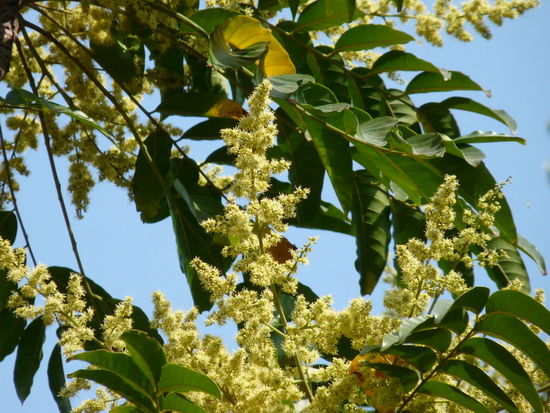|
|
|
有趣的樹名 雌雄莫問 Interesting Tree Names Male or Female? |
|
莫問,莫問,暗藏著不可告人的秘密. 雌雄異株的樹木在香港相當普遍,一般人是不會多加留意.只知道會結果的便是雌樹 ,開花不結果的便是雄樹.但在平常日子,又如何分辨它們呢?常綠臭椿是高大,樹幹畢直的喬木,其頂生葉簇傘狀,老遠已辨認到此樹.它的名字中的"臭", 味道來自它的雄花,前輩指有極令人討厭的氣味.平常人對樹木是雌雄莫問,選種標本樹時卻以雌樹為首選. Shhh! Please don』t ask. It』s a secret not to be divulged … Dioecious trees are quite common in Hong Kong and most people do not pay much attention. Usually we just know that fruiting trees are female and male just flower but do not fruit. Then, how to identify them at other times of the year? Ailanthus (Ailanthus fordii) are tall trees with a straight trunk and umbrella-shape of apical foliage. It can be easily identified from afar. Its Chinese name consists of the word 「stinky". The odor actually comes from the male flowers. The seniors point out that the odor is very unpleasant. We generally do not care to inquire if the tree is male or female. However, when it comes to the specimen tree, female is preferred. |
 |
|
在冬天果期時往荔枝角公園逛了一趟,順帶數算公園內的常綠臭椿,共有36棵.雌雄樹木的比例是14棵雌性和22棵雄性.常綠臭椿的臭味來自雄花,谷主對它的臭有點好奇,究竟是那種的臭呢?不過此樹甚為高大,要嗅一嗅可有點困難. I rambled in Lai Chi Kok Park when it fruited in winter. Incidentally, I counted the number of Ailanthus there. It』s a total of 36; 14 female and 22 male. Its odor comes from the male and I am a bit curious of how stinky it is. Unfortunately, the trees are too tall and the flowers are too high up for me to sniff. translated by Mary Chung |
 |
|
作者: Leon Lau, 譯者: Mary Chung facebook群組, s94096507@gmail.com |
| 下一篇 無間道:黑面神 |